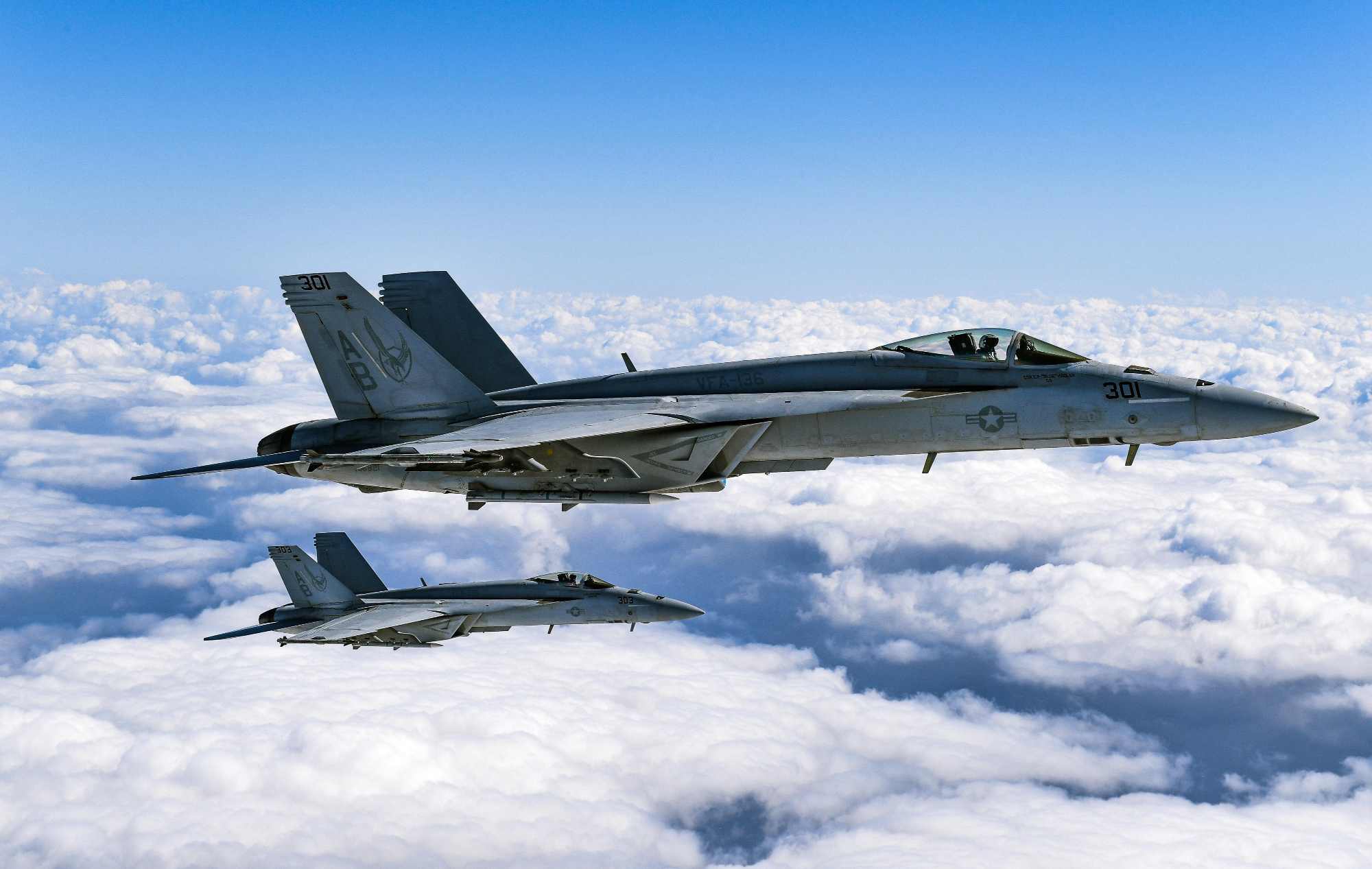In a move poised to enhance Malaysia’s airpower in the contested South China Sea, the United States has approved the Southeast Asian nation’s plan to acquire dozens of fighter jets from Kuwait—a decision that underscores Washington’s subtle strategy of bolstering regional deterrence.
The sale is part of a ‘quiet’ buildup of Malaysia’s defense capabilities, aimed at reinforcing sovereignty and preparedness while preserving diplomatic equilibrium with Beijing.
US Approval Clears Major Hurdle
On June 17, Royal Malaysian Air Force (RMAF) Chief General Tan Sri Asghar Khan Goriman Khan confirmed that Washington had approved the third-party transfer of up to 33 F/A-18C/D Hornets currently in service with the Kuwaiti Air Force (KAF).
The approval, which falls under the ‘US Arms Export Control Act’, comes after years of stalled discussions dating back to 2017. The US Congress must still formally sign off on the transfer.
Malaysia’s initial interest in the Hornets was shelved due to fiscal limitations and the ongoing development of its Multi-Role Combat Aircraft (MRCA) program.
However, growing pressure to address regional security gaps has revived the proposal. The finalization of the deal is expected this year, pending the completion of Kuwait’s ongoing receipt of its new F/A-18E/F Super Hornets and Eurofighter Typhoons.
Aircraft Details & Strategic Utility
The Hornets include both the F/A-18C (single-seat) and F/A-18D (two-seat) variants. Despite being older platforms, these aircraft have been well-maintained and periodically upgraded with modern radar, avionics, and electronic warfare systems.
Malaysian Defense Minister Datuk Seri Mohamed Khaled Nordin has assured that the airframes are structurally sound, thanks to low flight hours and rigorous upkeep.
The aircraft will serve as a stopgap solution as Malaysia awaits the delayed MRCA program, now projected to begin under the 15th Malaysia Plan around 2040.
Integration into the RMAF is expected to be smooth, given Malaysia’s existing operation of eight F/A-18D Hornets at Butterworth Air Base.
Reinforcing A Depleted Fleet
Malaysia’s current fighter fleet has seen attrition in recent years. The retirement of 16 MiG-29Ns in 2017 and the recent phase-out of the BAE Hawk light attack fleet have left capability gaps.
While 18 Russian-origin Su-30MKM fighters remain operational, the Air Force has faced challenges in covering both Peninsular and East Malaysia simultaneously.
To begin replenishing its force, Malaysia signed a contract with South Korea for 18 FA-50M light combat aircraft, with deliveries expected from 2026.
The incoming Hornets, combined with ongoing upgrades to Malaysia’s existing fleet—such as the integration of the Link 16 datalink and improved radar warning receivers—offer a short- to mid-term solution without requiring a complete overhaul of infrastructure or training.

Radar Expansion & Air Defense Gaps
In addition to the Hornet deal, Malaysia is acquiring two more Ground Master 400 Alpha (GM400α) long-range air surveillance radars from France, doubling its existing fleet. These will be deployed in both Peninsular and East Malaysia, significantly improving the country’s ability to detect fast-moving and low-flying aerial threats.
The move comes in response to long-standing concerns about Malaysia’s limited air domain awareness and lack of a robust Ground-Based Air Defense (GBAD) system. While the Hornets cannot resolve all of these issues, they do bolster the country’s immediate air response capabilities.
Strategic Timing: Kuwait’s Fleet Transition
Kuwait’s divestment of its F/A-18C/D fleet coincides with its broader modernization strategy. Under a 2016 deal with Italy, Kuwait is receiving 28 Eurofighter Typhoons equipped with AESA radar and advanced defensive aids.
Separately, a 2018 contract with Boeing includes 22 F/A-18Es and six F/A-18Fs, with deliveries expected to conclude by 2027.
This overlap in timelines has created an opportunity for Malaysia to acquire proven aircraft that are still in operational condition. Analysts estimate that between 24 and 30 Hornets will likely be serviceable for integration into the RMAF, depending on their condition and post-transfer upgrades.
The F/A-18 Hornet: Combat-Tested and NATO-Compatible
First introduced in the 1980s, the F/A-18 Hornet has served in multiple conflicts, from the Gulf of Sidra to the Gulf War and operations in Iraq and Afghanistan. It is powered by two F404-GE-402 engines and supports a wide range of NATO-standard weapons, including AIM-120 AMRAAMs and AGM-65 Mavericks.
Malaysia’s new Hornets, although older than some regional fleets, will enhance interoperability with US and allied forces. Their existing compatibility with RMAF infrastructure and training pipelines makes them a practical and cost-effective solution.
US-Malaysia Defense Cooperation
The Hornet transfer reflects the growing strategic cooperation between Washington and Kuala Lumpur. The two countries regularly participate in bilateral and multilateral military exercises such as Bersama Warrior and CARAT Malaysia. The US also provides defense support through training programs and equipment transfers, helping Malaysia modernize its forces without creating diplomatic friction.
This quiet, incremental approach aligns with US efforts to bolster regional deterrence in the Indo-Pacific without forcing partners into overtly anti-China postures.
A Cautious Response To Chinese Assertiveness
The need for enhanced air defense became evident in May 2021 when 16 Chinese military transport aircraft approached Malaysian airspace over the South China Sea.
The RMAF had to respond with aging Hawk jets, prompting a diplomatic protest and the summoning of the Chinese ambassador. Beijing claimed the aircraft were conducting routine training.
This incident exposed Malaysia’s limited capacity to monitor and defend its vast airspace, particularly in East Malaysia, and added urgency to ongoing defense upgrades.
Navigating China Relations: Quiet Diplomacy
Despite growing military cooperation with the US, Malaysia continues to pursue a policy of engagement with China.
In January 2025, Defence Minister Khaled Nordin had a call with General Liu Zhenli, Chairman of China’s Central Military Commission. The discussion focused on defence industry collaboration, military exercises, and maritime security.
Malaysia, like Vietnam, often manages tensions with China through behind-the-scenes diplomacy, aiming to avoid public confrontations while quietly reinforcing its national defense.
Flashpoints & Fragile Ties
Nonetheless, disputes persist. China’s nine-dash line claim overlaps with Malaysia’s exclusive economic zone, particularly off Sabah and Sarawak. Chinese coast guard vessels have repeatedly entered areas where Malaysia’s Petronas conducts offshore drilling.
In August 2024, a leaked diplomatic note revealed Beijing had demanded a halt to Malaysian activities in an oil-rich area off Sarawak. The Malaysian government rejected the claim and vowed to continue exploration.
Public sentiment also plays a role. In March 2025, Chinese tea chain Chagee faced a boycott in Malaysia after displaying a map with the nine-dash line in its app, triggering nationalist backlash despite its popularity.
Looking Ahead: Strategic Balance In A Contested Region
Malaysia’s acquisition of Kuwait’s Hornets—backed by US approval—signals a calculated effort to reinforce air defense without upsetting the delicate balance of regional diplomacy.
It reflects a pragmatic strategy: investing in readiness and sovereignty while keeping diplomatic channels with Beijing open.
As tensions in the South China Sea continue to simmer, Malaysia’s dual-track approach may become a model for other middle powers seeking to navigate a contested Indo-Pacific without choosing sides outright.
- Shubhangi Palve is a defense and aerospace journalist. Before joining the EurAsian Times, she worked for ET Prime. She has over 15 years of extensive experience in the media industry, spanning print, electronic, and online domains.
- Contact the author at shubhapalve (at) gmail.com



